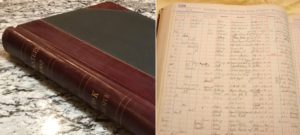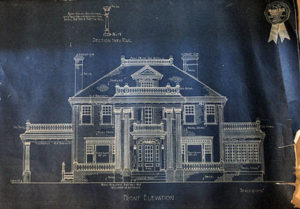 Kit Houses
Kit Houses
ID Block 5
 Property Records: If you enjoy delving into land records, you might have luck using grantor records to follow the chain of ownership back to the construction of your house. If the company provided a mortgage for the house, its name, or a member of its legal team, might appear as the financing party.
Property Records: If you enjoy delving into land records, you might have luck using grantor records to follow the chain of ownership back to the construction of your house. If the company provided a mortgage for the house, its name, or a member of its legal team, might appear as the financing party.
Some building departments listed the company as the architect or builder on the original building permit. Unfortunately, most building departments do not retain records for more than fifty years. Contact your local building department to determine how far back it retains records.
 Blueprints: Sometimes owners stashed blueprints or plans in the attic or basement. Finding these is a strong indication that the house was built from a kit, although the builder may have re-used plans from another house and purchased materials locally.
Blueprints: Sometimes owners stashed blueprints or plans in the attic or basement. Finding these is a strong indication that the house was built from a kit, although the builder may have re-used plans from another house and purchased materials locally.
Sales documents: Order forms, sales receipts, shipping inventories, a Certificate of Deposit for the purchase—particularly if the address is included—provide strong evidence of kit house provenance. Many kit house companies, including Sears, disposed of their records when they ceased operation or after a set period. However, the sales receipts of Aladdin are held at the Clarke Historical Library at Central Michigan University, Mount Pleasant, Michigan. Finding a sales receipt with the name of the owner or builder who ordered it, and the delivery address, is a strong clue.